|
|
|
|
|
|
Lab
Launches New Public Information Program this Month
Lab Launches
New Public Information
|
|||||||||||||||||||||||||||||||||||||||||||||||||||||||||||||||||||||||||||||||||||||||||||||||||||||||||||||||||||||||||
 |
Ask a
resident of the city of Berkeley what he or she thinks of Berkeley Lab
and too often the response is "who?"
To address this question a new program with the theme Did You Ever Wonder? will be launched on August 20, carrying information about who we are to the East Bay community through posters on our offsite buses, a dedicated website, and printed materials available to schools and other meeting places.
Professional surveys have revealed that some of our neighbors do recognize our name, and most have positive feelings about Berkeley Lab...but only the foggiest notion, often mistaken, of what we do here. Those who have heard of us are likely to confuse us with the Lawrence Hall of Science or that other lab to the east.
The challenge is to tell people about the tremendous diversity of research at Lawrence Berkeley National Laboratory - none of it classified - and the even more diverse collection of men and women who make up the Lab. We also want to help educate the lay public about specific scientific topics, encourage students to pursue scientific careers, and invite qualified people to consider working here.
A personal approach to curiosity
Did You Ever Wonder? aims to do all these things: inform, educate, inspire, and recruit.
The program starts from the premise that the best way to satisfy curiosity is to stimulate it. Did you ever wonder about the invisible marvels of the nanoworld...? About a better way to light up the darkness ...? How a portable water purifier saves children's lives?
Over the next few months a dozen such questions will be carried directly through downtown Berkeley and around the UC Berkeley campus six times an hour, every working day - and to the Rockridge BART station too - by large posters on the sides of the Lab's offsite buses. Each poster will invite the onlooker to learn more by visiting the Lab's website.
The posters and the special Did You Ever Wonder? website will feature individual Berkeley Lab researchers who are studying human health, the environment, and new technologies, and seeking answers to the most fundamental questions about nature and the universe in which we live. Personal profiles were selected as the best way to insure that Berkeley Lab science presents itself with a human face.
Three profiles will be featured each month. Starting Monday, August 20, offsite buses will carry posters featuring Mina Bissell, Ashok Gadgil, and Steven Louie. Starting in late September, the buses will carry posters of Eva Nogales, Saul Perlmutter, and Michael Siminovitch. Carolyn Bertozzi, Joe Jaklevic, and Mark Modera are among those who will appear later in the year.
These men and women are from a wide variety of backgrounds, and each came to science in a different way. They were chosen by Lab management to represent the many forms that scientific excellence can take and the many ways that Berkeley Lab as a whole contributes to the local community, the nation, and the world.
Making the connections
Each month three new profiles will be added to the top of the Wonder website, and all the previous profiles will remain accessible. The text is aimed at nonspecialists, but each profile has many links to other sites, some of them quite technical, that can carry the reader deep into the subject. In this way it will be clear that scientific research is a team effort, with numerous connections to related fields.
Colorful printed versions of the profiles will be distributed directly to local schools and to other community gathering places. These single-sheet "broadsides" will carry many of the same web addresses as the Wonder website, allowing the reader to go directly to specific topics on the web.
As many printed broadsides as needed will be made available to local teachers upon request; if they prove as useful for stimulating classroom interest as anticipated, they may form the seeds of study units to be developed later.
This and other possibilities will be assessed as the Did You Ever Wonder? program plays out this fall. The first wave of poster-carrying buses rolls out on August 20. On that day the Wonder website will go live on the web, and at the same time an email address - didyoueverwonder@lbl.gov - will be available to answer specific questions.
By David Gilbert
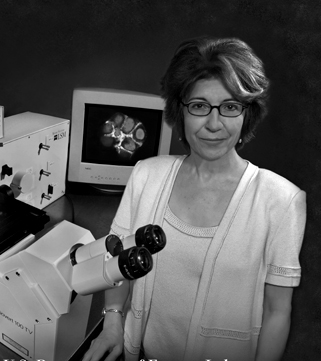 Mina Bissell, Life Sciences Division Director |
Breast cancer hits home. Many of us know someone who has had the disease, but we may not be aware that important progress is being made in the effort to better understand, diagnose and treat breast cancer here at Berkeley Lab. As a result, a forum has been established to bring word about the latest advances in the field directly to the community of Lab employees.
The pioneering work of Life Sciences Division Director Mina Bissell to elucidate the role of the tissue microenvironment of the breast in the development and reversion of cancer is internationally recognized, as is the breast cancer research of her colleagues in Life Sciences. The division's research is consistently validated by publications in high profile scientific journals and rewarded through competitive grants and honors. However, little is known at Berkeley Lab and in the Berkeley community about this burgeoning research program at the Lab.
This year, division researchers are engaged in some 50 different projects related to the study of breast cancer, funded by a total of approximately $10 million. These projects span a wide diversity of disciplines - from instrumentation development to studying such influences on breast cancer development and prevention as cellular aging, DNA repair, hormones, growth factors and many others.
Out of Bissell's desire to spread the word about the good work being conducted here, the Berkeley Lab Breast Cancer Research Awareness Forum was born.
"Through this Forum, we will bring our researchers, along with some of their colleagues in clinical settings, and even patients, together with the rest of the lab community to hear and learn, ask questions and share stories, about the exciting progress being made in predicting, identifying, and treating breast cancer," Bissell says.
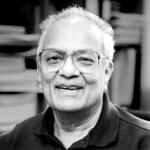 |
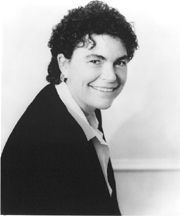
|
| Satyabrata Nandi (left) is a professor of cell and developmental biology at the University of California at Berkeley and an internationally-known breast cancer expert. Susan M. Love MD is an adjunct professor of surgery at UCLA and the Medical Director of the Susan Love MD Breast Cancer Foundation. One of the "founding mothers" of the breast cancer advocacy movement, she continues this work as director of the National Breast Cancer Coalition. She is the author of Dr. Susan Love's Breast Book and Dr. Susan Love's Hormone Book. Dr. Susan Love's Breast Book has been termed "the bible for women with breast cancer" by the New York Times. Although retired from the practice of surgery, she is still helping women through LLuminari, SM a multimedia women's health content company, and http://www.SusanLoveMD.com | |
To kick off this enterprise and raise awareness of the vital breast cancer research conducted on the hill, Berkeley Lab will host the first in a series of six panel discussions on Thursday, August 23 at noon in the Building 50 auditorium. Bissell will moderate the inaugural forum, which will feature author, teacher, surgeon, researcher and activist Susan M. Love, M.D., as well as UC Berkeley professor of cell and developmental biology and internationally-known breast cancer expert Satyabrata Nandi. The discussion will focus on the role of hormones in breast cancer prevention and treatment.
Love is the author of Dr. Susan Love's Breast Book and Dr. Susan Love's Hormone Book. Nandi has authored over 200 articles on breast cancer and has received many honors and awards, including a Guggenheim Fellow and Miller Professorship; he is currently the chair of the Board of Governors of the International Association for Breast Cancer Research. He and his coworkers have initiated many pioneering studies of breast endocrinology and breast carcinogenesis.
The second forum, to be held on Thursday, September 13, will feature Berkeley Lab's Mary Helen Barcellos-Hoff, head of the Life Sciences Cancer and Tissue Biology Group, and Bill Moses, senior staff physicist in the Department of Functional Imaging. Their discussion will provide an overview of Life Sciences Division's breast cancer research activities, from molecular, cellular and radiation biology to the development of new compact and ultra sensitive imaging devices for the detection of breast cancer.
In October, the third panel discussion will take on a more personal tone. Berkeley Lab employee Sonia Mueller was diagnosed at age 28 with metastatic breast cancer in January 2000. Upon advice from her doctor, David Irwin, director of Clinical Research at the Alta Bates Comprehensive Cancer Center in Berkeley, she participated in a clinical trial of the chemotherapeutic agents herceptin and navelbine. She remained on the trial for over a year with remarkable results. Mueller will bring a patient's perspective to the event and will be joined by her oncologist, Dr. Irwin.
In November, the forum will offer views on alternative breast cancer therapies from Debu Tripathy, Associate Clinical Professor of Medicine at the University of California at San Francisco and Berkeley acupuncturist Isaac Cohen. In the new year, additional panels will explore such subjects as epidemiology and radiation therapy and other emerging breast cancer surgery and treatment options.
All interested employees and their friends and colleagues are urged to attend and bring their thoughts to share.
 |
August 8 marked
the 100th anniversary of the birth of
Ernest O. Lawrence, this Lab's founder and namesake
and the inventor of the cyclotron-an ingenious little gadget
made of glass and wax that eventually earned him a Nobel
prize and launched a new era in physics. Currents celebrates
Ernest Lawrence's legacy with a special pull-out insert
highlighting his life and his accomplishments.
On August 2 the U.S. House of Representatives passed energy policy legislation closely reflecting the Administration's energy plan. Titled "Securing America's Future Energy," the act would provide tax credits for energy producers-in some cases substantially more than the Administration had requested-and would open the Arctic National Wildlife Refuge to drilling. The House also passed a slight increase in automobile fuel efficiency standards and provided more funds for the Department of Energy's energy research and development programs.
Although Secretary of Energy Spencer Abraham called the House bill a "big victory" for the president, the Office of Management and Budget was less enthusiastic, noting that under the Balanced Budget and Emergency Deficit Control act, reduced revenue from energy producers and increased spending on energy conservation could "reduce the surplus by at least $30 billion" and would have to be offset by other sources of revenue or by cuts elsewhere.
Last week the Energy Committee chaired by Jeff Bingaman (D-N.M.) began work on a Senate version of the bill by proposing hundreds of millions of dollars in increased spending on DOE energy research and development. "New science and technology are at the core of any solution to our national energy challenges," said Bingaman.
The energy-efficiency research would benefit greatly under the Senate version, which authorizes joint programs among the Offices of Science, Energy Efficiency, and Renewable Energy-one program would aim at developing white-light LEDs. Substantial authorizations for nanoscience and computation are also part of the package. The bill would authorize $150 million a year for demonstrations of carbon sequestration and gasification.
Republican and Democratic members of the committee joined in favoring increased r&d spending. On a proposal to reorganize DOE's management, however, ranking Republican Frank Murkowski of Alaska, demurred: the committee's bill proposes that the DOE establish a new under secretary for energy and science and promote the director of the Office of Science and the director of the nuclear energy department to assistant-secretary level, decisions Murkowski believes should be left to Secretary Abraham.
At the same time, the Senate's Governmental Affairs Committee approved a bill that would establish offices in the White House and in DOE to coordinate climate-change policy. Under the bill, unanimously approved by Republicans and Democrats, DOE would receive $4 billion over 10 years to promote and develop technologies to reduce greenhouse gas emissions.
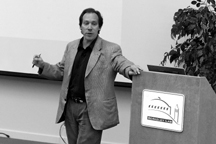 |
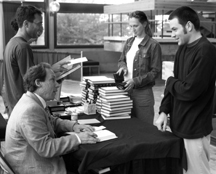 |
| Astrophysicist
and author Lawrence Krauss delivered two lectures in honor of Ernest
Lawrence on July 30, one to a Lab crowd who filled the Bldg. 50 auditorium
at noon, followed by an evening appearance in Zellerbach Hall open
to the general public.
Krauss's noon lecture was titled "Life, the Universe, and Nothing," and while amusing, the message was somber. In Krauss's view-although he has an ongoing debate with theorist Freeman Dyson on the subject-intelligence cannot survive in an expanding universe. Given results from experiments like the Supernova Cosmology Project and the BOOMERANG and MAXIMA measurements of the CMB, Krauss says, "the bad news is, we live in the worst of all possible universes. The only good news is, we can't prove it." His evening lecture, based on his new book, ATOM: An Odyssey from the Big Bang to Life on Earth and Beyond, was considerably cheerier. Afterward he signed copies provided by Cody's Books of Berkeley. |
|
 |
Thomas A. Kalil, one of former President Clinton's key technology advisors, was hired by UC Berkeley to serve as assistant to the chancellor for science and technology. In this position he will help develop new research initiatives at the University and increase UC Berkeley's role in shaping the national agenda.
Kalil served under Clinton for eight years, eventually becoming deputy assistant to the President for technology and economic policy and deputy director of the National Economic Council. He was the point person on a wide range of science, technology and telecommunications issues, including the National Nanotechnology Initiative, the Next Generation Internet, and efforts to expand funding for the physical sciences and engineering.
Kalil hopes to instruct scientists about how to attract Congressional and public support for research.
Gov. Gray Davis has approved California's budget, which provides $3.2 billion in state funds to UC for the 2001-2002 fiscal year. This is mixed news for the University in that it provides an increase of 4.7 percent, yet falls short of UC goals for faculty and staff compensation.
"The reduction in salary funding was particularly disappointing, and restoration of that funding will be a high priority for us because it is critical to maintaining quality programs," said UC President Richard C. Atkinson. "However, given the very difficult fiscal circumstances the state is facing overall, we are grateful to Governor Davis and the Legislature for continuing to place a high priority on all of education, including the university."
The budget also includes the second installment of funding for three California Institutes for Science and Innovation that will conduct research in cutting-edge scientific fields, and a first installment of funding for a fourth institute - the Center for Information Technology Research in the Interest of Society, a joint venture among UC Berkeley, UC Santa Cruz, UC Davis, UC Merced and private-sector partners.
As part of an ongoing partnership, the California Digital Library (CDL) and the University of California Press have collaborated to make more than 60 UC Press books freely available on the web. The collaborative publishing venture is a core component of CDL's "eScholarship" program, designed to support innovation in scholarly communication.
Emulating the highly successful Los Alamos National Laboratory's "arXiv" e-print service for physics, math and computer science, these "e-print" repositories are hosted by the CDL, but managed by disciplinary communities of scholars. Additional information about the California Digital Library may be found at the CDL Web site, http://www.cdlib.org.
By Paul Preuss
p
– as we all learned in grade school
– is a ubiquitous constant, a number whose first few digits are 3.14159.
Over two hundred and fifty years ago pi was proved irrational, which means
its digits run on forever - by now they have been calculated to billions
of places - and never repeat in a cyclical fashion.
But are the digits of pi random? Everybody thinks so. Nobody can prove it.
Now David H. Bailey, chief technologist of the National Energy Research Scientific Computing Center (NERSC), and his colleague Richard Crandall, director of the Center for Advanced Computation at Reed College, Portland, Oregon, have taken a major step toward proving what "everybody knows."
The mathematical challenge is to prove that pi is a "normal" number, which means that its digits are random in a certain statistical sense.
"In the familiar base 10 decimal number system, any single digit of a normal number occurs one tenth of the time, any two-digit combination occurs one one-hundredth of the time, and so on," Bailey explains, describing the normality property. "It's like throwing a fair, ten-sided die forever and counting how often each side or combination of sides appears."
Pi certainly seems to behave this way. In the first six billion decimal places of pi, each of the digits from 0 through 9 shows up about six hundred million times. Yet such results, conceivably accidental, do not prove normality even in base 10, much less normality in other number bases.
In fact, not a single naturally occurring math constant has been proved normal in even one number base, to the chagrin of mathematicians. While many constants are believed to be normal - including pi, the square root of 2, and the natural logarithm of 2, often written "log(2)" - there are no proofs.
The determined attacks of Bailey and Crandall are beginning to illuminate this classic problem. Their results indicate that the normality of certain math constants is a consequence of a plausible conjecture in the field of chaotic dynamics, which states that sequences of a particular kind "uniformly dance in the limit between 0 and 1," as Bailey puts it - a conjecture that he and Crandall refer to as "Hypothesis A."
"If even one particular instance of Hypothesis A could be established," Bailey remarks, "the consequences would be remarkable" - because the normality, in base 2, of pi and log(2) and many other mathematical constants would follow.
This result derives directly from the discovery of an ingenious formula for pi that Bailey, together with Canadian mathematicians Peter Borwein and Simon Plouffe, found with a computer program in 1996. Named the BBP formula for its authors, it has the remarkable property that it permits one to calculate an arbitrary digit in the binary expansion of pi without needing to calculate any of the preceding digits. Prior to 1996, mathematicians did not believe this could be done.
The digit-calculation algorithm of the BBP formula yields just the kind of chaotic sequences described in Hypothesis A. Says Bailey, "These constant formulas give rise to sequences that we conjecture are uniformly distributed between 0 and 1 - and if so, the constants are normal."
Bailey emphasizes that the new result he and Crandall have obtained does not constitute a proof that pi or log(2) is normal (since this is predicated on the unproven Hypothesis A).
"What we have done is translate a heretofore unapproachable problem, namely the normality of pi and other constants, to a more tractable question in the field of chaotic processes," he says, noting that they appear to be random "because they are closely approximated by a type of generator associated with the field of chaotic dynamics."
Bailey's and Crandall's results are reported in the Summer 2001 issue of Experimental Mathematics. Its numerous connections with other areas of research include the field of pseudorandom number generators, with applications in cryptography. "The connection to pseudorandom number generators is likely the best route to making further progress," says Bailey. "Richard and I are pursuing this angle even as we speak."
For more about the normality of pi and other constants, and the BBP algorithm, visit David Bailey's website at http://www.nersc.gov/~dhbailey.
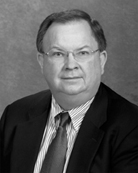 |
Fundamental science supported by the U.S. Department of Energy underpins breakthrough discoveries. The department or its predecessors have sponsored the research of more than 72 Nobel Prize-winning scientists. Research at the Office of Science Laboratories provides a foundation of current knowledge of matter, energy, the properties of the elements, the basis for stunning advances in nuclear medicine and significant discoveries on the structures and processes of life.
Science magazine's "Breakthrough of the Year" for 2000 was "Sequenced Genomes", an outcome of the Human Genome Project, which was started by DOE's Office of Science. The Office of Science has been instrumental in revising our views on the composition of matter and energy in the Universe. The recent discovery of dark energy now points to an unforeseen type of energy that is accelerating the expansion of the Universe.
Each year, 22,000 university, government and industry-sponsored scientists conduct experiments at the specialized user facilities operated by the Office of Science. DOE is unique among other scientific funding agencies in that it builds and operates major research facilities essential to experimental work in many fields.
Science on the cutting edge requires cutting edge facilities. At Berkeley Lab, more than 70 percent of the current government-owned space was constructed before 1970. The average building is 35 years old. Berkeley Lab is not unique. In fact, 70 percent of the space in the entire DOE complex is more than 30 years old, with many facilities exceeding their useful life expectancy. The aged facilities are a cloud on the future of world-class science at these facilities. A new level of sustained investment is required to ameliorate this situation.
The Office of Science is bursting with well-formulated research opportunities that could merit a significant budget increase. In the coming years, we see advances in nanoscience, the development of more powerful computational models of combustion and climate change, the understanding of molecular-level genome functions, and controlling microbes for energy and environmental applications in addition to discovering the underlying the properties of matter from high-temperature plasmas to solid state materials to quarks.
We need to address the imbalance in support for the physical sciences. In the last decade we have seen biomedical research increase about 200 percent in constant dollars while the Office of Science has increased only 2 percent. Harold Varmus, former Director of the National Institutes of Health, has said, "The balance of the sciences is essential to the progress in all spheres, including medicine."
I propose a 15 percent per year real growth in the Office of Science budget over the next 5 years.
The paper "DOE Science for the Future" eloquently describes the need for increasing the institutional visibility of the Office of Science if it is to continue to perform scientific research at the highest levels. I would characterize this need as giving the Office a distinctive identity, one that would enable it to continue exercising its mission without endangerment from other peripheral activities.
Making the Office of Science an "NNSA-like entity" (patterned after the National Nuclear Security Administration, which oversees defense programs within the DOE) would give the Office control over those administrative areas that critically affect how it carries out its mission. The Office of Science has a need to have control over its own environment, health and safety, procurement, security and other administrative activities so that these efforts are sized according to what the programs need to accomplish their missions. In essence, responsibility and accountability must be aligned.
In summary, the Office of Science provides much for the nation. It needs investment to remain world class. It also needs a distinctive identity to achieve its full potential.
By Paul Preuss
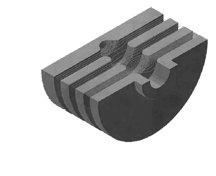 The PEEM3 team has designed an electron mirror with four electrodes to correct aberrations in the beam and return them to the microscope. |
When a beam of synchrotron x rays is focused on a sample, electrons are emitted whose energy and trajectory convey a great deal of information about the material. Photo-emission electron microscopes -- PEEMs -- collect and focus these electrons with a system of magnetic and electrostatic lenses.
The Advanced Light Source's PEEM2 can resolve features separated by just tens of nanometers (billionths of a meter) -- ten times better than the best optical microscopes. But Jun Feng of the ALS hopes to achieve resolution ten times better yet, "the ultimate possible."
While a German collaboration called SMART has a head start in the race, Feng and his colleagues are confident that the tightly-knit PEEM3 design group, centered at Berkeley Lab, can catch up and in the process add unique features.
A PEEM image not only gives a physical picture of the sample but can indicate what it's made of and how its atoms and molecules are organized. PEEMs can even look beneath the surface to reveal magnetic structures.
Like an optical microscope, however, a PEEM's spatial resolution can be limited by aberration. Aberration wastes electrons, because electrons ejected at the wrong angle or energy can't pass through the focusing system.
In an optical system like a camera, chromatic aberration produces a rainbow effect when lenses bend light of different colors (wavelengths) at different angles. Spherical aberration produces fuzziness and distortion because a spherical lens or mirror bends light rays at the edges more than at the center.
Electrons behave in a similar way: different energies focus at different distances from an electrostatic lens, and electrons focus differently depending on their distance from its center. One way optical cameras overcome aberration is by using correcting concave lenses, which spread light rays apart. But electrostatic lenses only focus inward. To correct electrons, what's needed is an electron mirror.
In theory, electrons can be sent from the sample to a mirror that exactly compensates for aberrations, then sends the electrons back into the optical system. "Essentially we want to reverse the sign of the defect and cancel it," says Feng.
"The most advanced electron mirror so far was demonstrated in 1997 by physicist Gertrude Rempfer at Portland State University," he explains. "She proved that a mirror can be used as an aberration corrector, but with her two-electrode mirror, it's very difficult to cover the whole range of aberrations."
The PEEM3 team is developing a four-element mirror mounted at right angles to the main column of the microscope; electric fields between the electrodes will cancel aberrations in the beam and reflect electrons back along the path. Design of the mirror and control of the voltages on the electrodes depend on first accurately calculating all aberrations in the electron path. The separator that extracts the beam and returns it is another crucial part of the design.
With critical supporting evidence from the initial design of PEEM3, supported by Berkeley Lab's Directed Research and Development Program, DOE's Office of Science will fund construction of a $3.8 million, elliptically polarized, undulator ALS beamline.
In addition to Jun Feng, PEEM3 researchers include Simone Anders of IBM; Etienne Forest of Japan's High Energy Accelerator Research Organization, KEK; Howard Padmore, leader of the ALS's Experimental Systems Group; David Robin of Berkeley Lab's Accelerator and Fusion Research Division (AFRD); Michael Scheinfein of Arizona State University; Der-Hsin Wei of Taiwan's Synchrotron Radiation Research Center; and Ying Wu of AFRD. Members of Berkeley Lab's Engineering Division include Robert Duarte, Nicholas Kelez, and Ross Schlueter. Andreas Scholl of ALS and Hendrik Ohldag of Stanford work with the team in a consulting capacity.
For more on PEEM3, see http://www.lbl.gov/enews/7-5-01.html.
By Paul Preuss
The Snowmass Summer Study on the Future of Particle Physics, convened high in the Colorado Rockies during the first three weeks of July "to consider the field in all its richness and diversity," was notable not only for some remarkable meetings of the mind among the 1,200 scientists who participated - including over four dozen Berkeley Lab attendees - but for some significant physics results (and nonresults) reported by the home institutions of many of the attendees while they were in session.
Snowmass 2001's three-week round of talks, seminars, and work groups kept many flavors of physicist - from machine-builders to cosmologists - busy for long days of debate and planning. One result was a strongly backed recommendation for "the expeditious construction of a linear collider as the next major international High Energy Physics project."
Berkeley Lab's Michael Barnett helped write the communiqué and was quoted in the July 27 issue of Science magazine as saying "I thought we'd never get to a consensus ... It took off suddenly."
Those concerned agreed that the most sensible way forward to an analysis of the Higgs boson, the parsing of supersymmetric particles, the resolution of CP violation, and other fundamental challenges lies in building a big new electron-positron linear collider to complement the inherently more powerful but less precise Large Hadron Collider, now under construction at CERN.
Agreement on priorities is increasingly necessary to the success of expensive scientific proposals - the linear collider would cost at least $6 billion dollars - but agreement alone is hardly sufficient. Many hurdles remain, including deciding where to put the proposed linear collider; Japan, Germany, and the United States all want the job.
Meanwhile, news from the outside world reached the busy physicists in the form of announcements from SLAC that the BaBar experiment had unequivocally established CP violation in the decay of B mesons (see Currents, July 13); Berkeley Lab's Natalie Roe, a member of the BaBar collaboration, explained the significance of the results on Aspen television.
In a sort of anti-news item, a group of CERN researchers admitted that hints of the Higgs boson in data from the Large Electron-Positron storage ring (LEP) look weaker now than they did last fall, when scientists with hopes of being first to the Higgs tried to persuade CERN management not to dismantle LEP. The decision to dismantle, so that construction could begin on the LHC in the same tunnel, was a hard choice that looks to have been the right one.
An intimate view of events at Snowmass 2001 can be found in the July 27 issue of Ferminews, published by Fermilab's Office of Public Affairs.
Marriott Oakland City Center Hotel
& Oakland
Convention Center September 3 - 7, 2001
This Labor Day, Sept. 3, Berkeley Lab Director Charles Shank will kick off ICIS'01, a five-day gathering of 300 international ion-source experts who meet every two years to exchange theories, experimental results, and new ideas in every aspect of the field. For only the second time in a decade ICIS is being held in the United States, and is again hosted by Berkeley Lab.
On Thursday afternoon, Sept. 6, Deputy Director Pier Oddone will chair a special session on ion spacecraft propulsion at the Chabot Space and Science Center. Nobel Laureate Carlo Rubbia of CERN, Oakland Mayor Jerry Brown, and astronaut and plasma physicist Franklin Chang Díaz, a principal investigator of the VASIMR rocket engine, are among those slated to attend. An evening reception follows, open to spouses and friends of program participants.
Other topics to be addressed at the conference include the theory of ion production and transport; ion sources such as ECRs, liquid metal, laser, and other advanced designs; and applications from accelerator injection to fusion energy to medical treatment and more.
Berkeley Lab's Ka-Ngo Leung is the ICIS'01 Conference Chair and Jose Alonso is the Scientific Coordinator, with Martha Condon serving as Conference Administrator. For up-to-date news about the ICIS program and registration details, visit http://icis01.lbl.gov/third_ann.html.
The Lab's Networking and Telecommunications Department (NTD) is working to improve LBLnet Remote Access Services (RAS) by adding features designed to make the services easier to use. It's also going to get less expensive to use -- the per-minute cost of using 1-800-LBL-DATA is being reduced in FY02.
Beginning Oct. 1, when FY02 starts, traveling or telecommuting staff using 1-800-LBL-DATA will find their per minute charge reduced from 23 cents to 15 cents per minute. The reduction is the result of a new long-distance contract with MCI. Also, international access is now available from many countries, which will soon be listed on LBLnet's Remote Access Services Web site page (http://www-lblnet.lbl.gov/lblnet/ras/default.html).
In addition to lower-cost 1-800 access, new software is available for employees needing to change their computer configuration when traveling or telecommuting. LBLnet RAS has obtained a license to provide our clients with Norton's Mobile Essentials for about $23 per laptop.
In a nutshell, Mobile Essentials provides a window at boot time to enable you to select your system configuration of choice -- whether it be for one's home DSL or on the road traveling to a conference. This eliminates the need to reconfigure your computer when traveling. This software is available by requesting a copy via the LBLnet web page (http://www-lblnet.lbl.gov/lblnet/Lsg/MobileEssen/MobileEssentials.html) or by contacting remote-request@lbl.gov.
Employees who would like to have the software installed on their computers can call the LBLnet Services Group at X4559 to arrange for this service. - Jon Bashor
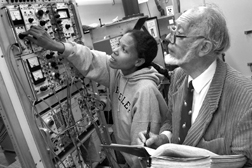 |
Juanita Hester (left), an intern in the Pre-Service Teachers program run by the Center for Science and Engineering Education (CSEE), works with her mentor, Frank Asaro, on the Luis Alvarez Iridium Coincidence Spectrometer. Juanita is a student at California State University, Fresno, and is one of the many visitors who come to the Lab each summer to gain valuable hands-on experience in CSEE's science education programs.
The seventh annual Berkeley Lab Ergonomics Fair will be held on Aug. 22 and 23 from 11 a.m. to 2 p.m. in Perseverance Hall (Bldg. 54). Featured will be a wide range of new products and hands-on displays of furniture, keyboards, accessories and tools.
Vendors will be present to demonstrate their products and discuss ergonomic solutions for offices, labs and shops. Complimentary stress reduction massages will be offered.
For more information visit the ergonomics website at http://www-ehs.lbl.gov/ergo/ or contact Jeffrey Chung at X5818 or JYChung@ lbl.gov.
Sexual Harassment & Discrimination Prevention for Employees
The Human Resources Department is offering a few labor employee relations classes this summer and fall. The first one is Sexual Harassment and Discrimination Prevention for Employees, presented by Jane Baynes of HR. The first class was held on August 2, and will be offered two more times this month, on Aug. 16 and Aug. 30 from 10:30 to 11:30 a.m. in Perseverance Hall (Bldg. 54, conference room 130.)
Managing Employee Conduct and Performance
Next month, Rus Ritter will present Managing Employee Conduct and Performance on Sept. 13 and Sept. 27, at the same place and time.
To enroll for any of these courses, contact Veronica Nero at vmnero@lbl.gov or X6749.
Procurement has set up a new system contract with MDC Vacuum Products to provide Laboratory users the capability of ordering items such as flanges, fittings and valves online at prenegotiated discount prices. Users will be able to use the subcontractor website, thus eliminating the need for a Procurement Card or purchase order, while still maintaining the option of placing orders by fax or phone. For more information contact Olga Lobao at X5255.
The LBNL volunteer emergency amateur radio group meets the second Wednesday of every month at noon in Bldg. 48-109. Participants share the latest information and technology in addition to making contingency plans for emergency communications in the event of a major catastrophe (like an earthquake or prolonged power outage).
Whether you are already a licensed ham or would like to find out how to become one, join the group at the next meeting. For more information, call Alan Biocca WB6ZQZ at X7700.
The Science Exploration Camp will be operating the week of Aug. 27, but enrollment is low because many local school districts will be back in session. Anyone who is eligible to enroll their children, either from the Lab or the community, may contact the camp at X6566. More information regarding the camp can be found at http://sciencecamp.lbl.gov/.
Standings After Week 9
1. Fully Loaded, 10-0
2. Rated X, 9-1
3. Ballpark Estimates, 8-1
4. SUDZ, 7-3
5. Camshafts, 6-3
6. Pedal Pushers, 5-5
7. Animals, 4-6
7. Cupcakes, 4-6
7. One Time Password, 4-6
10. Drosoftballa, 3-7
11. Las Chupacabras, 2-8
12. Silver & Black, 1-9
13. Hard Drives, 1-9
Rick Briseno Retirement
Join friends and family of Rick Briseno in celebrating his retirement with a dinner on Friday, August 24 from 6 to 11 p.m. at the Rockerfeller Lodge, 2650 Market Avenue, San Pablo. The cost is $35 per person. Today is the deadline for reservations, so contact Jennifer Rosado as soon as possible at X4762.
NEW EMPLOYEE ORIENTATION
8:30 a.m., Bldg. 50 auditorium
CLASS ON SEXUAL HARASSMENT &
DISCRIMINIATION PREVENTION
10:30 - 11:30 a.m., Perseverance Hall, Bldg. 54
ERGONOMIC FAIR
11 a.m. - 2 p.m., Perseverance Hall, Bldg. 54
ERGONOMIC FAIR
11 a.m. - 2 p.m., Perseverance Hall, Bldg. 54
LABOR DAY HOLIDAY
SHOEMOBILE
7:30 a.m - 3:30 p.m., cafeteria parking lot
Send us your announcements
Announcements for the General Calendar and Bulletin Board page may be sent to MSFriedlander@lbl.gov. Seminar & Lectures items may be mailed to currents_ calendar@lbl.gov. You may also fax items to X6641 or mail them to Bldg. 65B. The deadline for the Sept. 7 issue is 5 p.m. Monday, Sept. 3.
ENVIRONMENTAL ENERGY TECHNOLOGIES
DIVISION SEMINAR
Absorption Chillers and Heat Pumps: Technology, Applications and Simulation
Speaker: Gershon Grossman, Technion Israel Institute of Technology
Noon, Bldg. 90, Room 3148.
ENVIRONMENTAL ENERGY TECHNOLOGIES
DIVISION SEMINAR
The Trials and Tribulations of Testing Water Heaters
Speakers: Jim Lutz, Richard Liu and Julie Glover, EETD
Noon, Bldg. 90, Room 3075.
AFRD SPECIAL SEMINAR
Novel Uses for a Neutron Source in Medicine and Radiobiology
Speaker: Aidnag Diaz, University of Washington
1:30 p.m., Bldg 50A, Conference Room 5132
ENVIRONMENTAL ENERGY TECHNOLOGIES
DIVISION SEMINAR
Green Buildings and the Green Development Process
Speaker: David Gottfried, Worldbuild and USGBC
Noon, Bldg. 90, Room 3148
LIFE SCIENCES DIVISION SEMINAR
Sex, X and Chromosome Segregation
Speaker: Barbara Meyer, UC Berkeley
4 p.m., Bldg. 66 auditorium
|
Date |
Course |
Time |
Building |
|
|
8/13 |
EHS 275 |
Confined Space |
9:00 - 11:00 |
51-201 |
|
8/13 |
EHS 274 |
Confined Space Retraining |
11:00 - 12:00 |
51-201 |
|
8/13 |
EHS 330 |
Lead Hazard Awareness |
1:30 - 2:30 |
51-201 |
|
8/14 |
EHS 10 |
Introduction to EH&S at LBNL |
8:30 - 10:15 |
50-aud |
|
8/14 |
EHS 60 |
Ergonomics for Computer Users |
10:30 - 11:30 |
51-201 |
|
8/15 |
EHS 276 |
Fall Protection |
8:30 - 11:30 |
90-1099 |
|
8/15 |
EHS 530 |
Fire Extinguisher |
10:00 - 11:30 |
48-109 |
|
8/15 |
EHS 280 |
Laser Safety |
1:00 - 4:00 |
51-201 |
|
8/16 |
EHS 400 |
Radiation Protection- Fundamentals |
8:30 - 11:30 |
51-201 |
|
8/17 |
EHS 432 |
Radiation Protection- Lab Safety |
8:30 - 11:30 |
51-201 |
|
8/21 |
EHS 154 |
Building Emergency Team |
9:00 - 11:00 |
48-109 |
|
8/21 |
EHS 283 |
Ultra Violet User Safety |
1:30 - 2:30 |
51-201 |
|
8/22 |
EHS 210 |
Hoist |
9:00 - 10:30 |
51-201 |
|
8/23 |
EHS 260 |
Basic Electrical Hazard Awareness |
10:00 - 11:30 |
51-201 |
|
8/28 |
EHS 135 |
Earthquake Safety |
9:00 - 10:00 |
48-109 |
|
8/28 |
EHS 735/ 738 /739 |
Biosafety/Bloodborne Pathogen |
1:30 - 2:30 |
51-201 |
|
8/28 |
EHS 730 |
Medical Biohazardous Waste |
2:30 - 3:30 |
51-201 |
|
8/29 |
EHS 604 |
Hazardous Waste Generators |
9:30 - 11:00 |
51-201 |
|
8/29 |
EHS 622 |
Radioactive/Mixed Waste Generators |
11:00 - 12:00 |
51-201 |
|
8/30 |
EHS 61 |
Ergonomics for Workstation Evaluator |
1:30 - 4:00 |
51-201 |
* Includes EHS 392/405, followed by the orientation. Please arrive at 8:15 for sign-in.
For more information or to enroll, contact Valerie Espinoza at VMEspinoza@lbl.gov or enroll via the web at http://www-ehs.lbl.gov/ehstraining/registration/. Preregistration is required for all courses except EHS 10 (Introduction to EH&S). Times and locations are subject to change. For a full, updated schedule of EH&S training sessions see http://www-ehs.lbl.gov/schedule/.
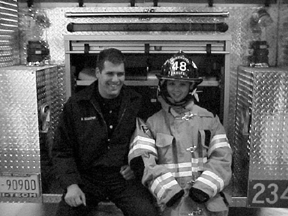 On July 20, Berkeley Lab firefighter Brett Boukather gave a tour of the fire station to some student assistants who are spending the summer at the Lab. He is shown here with Farm Saechao, a summer intern with CSEE. |
'95 HONDA ACCORD EX, 4 dr, 73K mi, first owner, ac, black, sunrf, tint window, pwr seat/mirrors/win, alarm, lock, am/fm/cass/ cd, cruise, rear defogger, airbag, childproof lock, folding rear seat, rear spoiler, best offer, Jianchun, X5625, 234-2317
'91 GEO PRIZM, 4 dr, 87K mi, auto, am/fm, very good cond, $2,500/bo, Bob, X4481
'90 BUICK CENTURY Sedan 4 dr, auto trans, 3.3L V6, 94K mi, cruise, pwr lock, am/fm, recent smog, perfect mech & int, $2,700, Moonsuk, X4954
'88 FORD ESCORT, hatchback, 2 dr, 153K mi, manual, runs well, recent smog cert, am/fm/cas, $650, Christophe, X4473, 558-9749
'86 SAAB 900 2DR HB, wht, 5 spd, ac, am/fm/cass, 136K fwy mi, exc cond, exc mpg, clean, 1 owner, all maint records avail, $2,500, Nobu, X4585, (415) 927-0701
'86 FLEETWOOD CADILLAC, loaded, 12 cd w/ remote, rebuilt engine, 40K mi, leather int, great shape all around, $1,500/bo, Larry, X6025, pager 1272-220, (707) 642 4303
'84 HONDA CIVIC WAGON, 180K mi, auto, new timing belt last year, recently replaced muffler, water pump & brake shoes/ cylinders, $1,200/bo, David, X7083
'84 300D TURBO, 4 dr, beige ext/brick red leather int, 140K mi, new batt/tires, good cond, paint not so good, $3,000/bo, Peter, (650) 692-8328
8' CABOVER CAMPER, 2 side jacks, $500; 7' cabover camper, 4 corner jacks, $500; 6' fiberglass camper shell, $100; 2-horse circle J trailer, gold/tan, ramp, $1,400, Charlotte, 232-4506
BERKELEY HILLS, 1 bdrm apt, 10 min from Lab, 1 parking space, avail 8/15, $850/mo, sec dep, $1,050, Jim, (925) 831-9985, mtdo42@jps.net
BERKELEY HILLS, studio in exquisite architect-designed home, edge of Tilden Park overlooking Wildcat Canyon, near hiking/jogging trails, golf course, Lake Anza, priv road, easy parking, safe neighbrhd, furn, large bth, murphy bed, security syst, cable TV, storage, deck, non-smoker, yr lease, Evan, X6784, 525-7655, emills@lbl.gov
BERKELEY, B&B, close to shuttle, 1 garden cottage room & 1 lge room avail 8/1, 1 person per rm, $850/mo or $300/wk, 2 wks min, Hellen, 527-3252, Rachel, X6262
SAN FRANCISCO sublet avail Aug - Oct, lge & sunny furn room, shared bth, living rms, kitchen, breakfast nook, parrot, deck & lge garden w/ ponds; inner Sunset location, restaurants, cafes & shops around the corner; good public transp connections, $900/mo Alice, (415) 664-8113, abrydges@onebox.com
WALNUT CREEK townhouse on Pomar Way near BART, 2 bdrm/ 2-1/2 bth, end unit w/ fireplace, detached garage, 2 patios, ac, in Sunset Park across from Countrywood shopping ctr, $1,500/mo, avail in Sept, Bob, (925) 376-2211, (707) 986-7683
VISITING PROFESSOR on sabbatical from Univ of Maryland & spouse seeking furn apt or house 1/1-6/31, no children/pets/smoking, Miguel, X6443, mafurman@ lbl.gov, dragt@physics.umd.edu
'89 BAYLINER Capri Bowrider, '17 w/ force engine O/B escort trailer, haven't used in 2 yrs, good for Berryessa for cruising and fishing, $3,000/bo, Desiree, X7949, 508-7631
9' KEOWEE KAYAK w/ skirt, cost $375, sell $275; pool or spa filter Mita 100 w/ 2 cartridges, $50, Jim, (925) 831-9958
APPLE NEWTON Message Pad 2000 (upgraded to 2100), w/ keyboard, carrying case, 28.8k PC card modem, cable & connector to link up to Apple modem/printer port (not USB, but you can hook up w/ connector/converter); software: Newton Connection utilities, Revelar Connection utilities, more; great machine, $200 w/ everything, Jon, X5974
BICYCLE Diamond Back, semi-mountain semi-road, 21-spd, 2 yrs old, exc cond, $125; Sony cd/radio/cass w/ remote, $50, Christophe, X4473, 558-9749
CHIHUAHUAS, 2 males born 7/3, black, brwn w/ white, $200/ea, Charlotte, 232-4506
GARAGE STORAGE, 10' x 20', secure, El Cerrito near San Pablo & Central, no vehicles or workshop, non-smoking premises, avail 9/1, Nance, X7328, Joan, 526-9048
LADIES BICYCLE, used Schwinn brown, good conditions, $50, Cornelia, X7780
MOVING SALE: computer (330 MHz, 120 MB memory, 17GB HD), fast, high-volume laser printer, 15" TV & VCR, 3-seater hide-a-bed & matching 2-seater coach, IKEA 4 post queen bed, white queen futon w/ blk frame, IKEA dressers, 3 halogen lamps, 2 Gabbe Persian rugs, wood endtable, framed Ansel Adams & Monet print & Picasso print, adj Anthro computer table w/ swive printer tray, 2 tall CD racks, standing mirror 2x6', solid oak dinner table, tools & kitchenware, Brenda, X6516, 849-3101
REI NOVARA Dirt Rider 20", 10-spd Shimano, blue, fits most children 6-10 years old, as new, $100, Edith, X5553
ROLLTOP DESK & matching chair, solid oak, lockable & false bottom drawer, 4-1/2' w x 2' , exc cond, must sell, $400/bo, Randy, X7026, (925) 228-7427
SF OPERA TICKETS: Arshak II 9/21, Die Meistersinger von Nurnberg, 10/19, Tosca 10/26, Jenufa 12/7, Carmen 6/14, $170/pr, Balc Crc first Row, Diana, X6444
UMAX SCANNER w/ cd, good; HP820CSe color printer, needs work; old Everex tape drive; old PC mother boards; 4 ARCnet LAN cards, Ron, 843-7678
HOUSE SITTER/ babysitter that could also help with driving, errands or housework on weekday hrs, also free exchange of Italian lessons for English conversation, Enrico, X7516, 981-9916
KIHEI, MAUI, 1 bdrm condo, across the street from Kam 2 beach (best beach on Maui), fully equipped, view the ocean & Haleakela, $400/wk, Fred or Shar 981-2073 days, 523-4150 eves
LOST on 6/7: keyring w/ several keys, possibly near Bldg 90 or 88, Linnea, X7623, Steve, 704-1912
CARPOOL, looking for passenger(s), outer Sunset in SF to Lab, 7 - 3:30, time & rate neg, Louis, X6109
VANPOOL riders wanted for S.F. to UCB/LBNL, enjoy safe, friendly commute while saving money & reducing stress, Tony, X2817, Deb, 642-6839
2 MALTESE CATS, free to a caring home, indoor, 1-1/2 year-old brother & sister, very friendly, people-oriented, potty-trained, playful, healthy, beautiful gray coat, both are fixed & vaccinated, Miguel, X6443, 526-5291
EXERCISE MACHINE, Weslo Cardioglide, total body motion low impact workout, adj, onboard computer, nearly silent for TV watching, manual, new cond, paid $199, view and/or pick up at 50-6034, Mark, X7087, 486-8079
Ads are accepted only from LBNL employees, retirees, and onsite DOE personnel. Only items of your own personal property may be offered for sale.
Submissions must include name, affiliation, extension, and home phone number. Ads must be submitted in writing via e-mail (fleamarket@lbl.gov), fax (X6641), or delivered/mailed to Bldg. 65B.
Ads run one week only unless resubmitted, and are repeated only as space permits. They may not be retracted once submitted for publication.
The deadline for the June 15 issue Thursday, June 7.